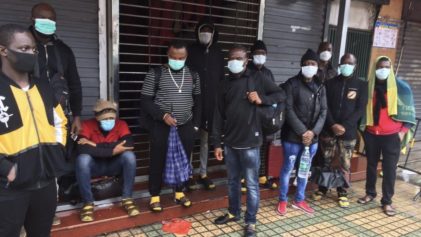What has happened to Mali? Ancient tombs desecrated in Timbuktu, political paralysis in the capital and the 70-year old transitional president beaten almost to death by an angry mob. A nation once renowned for its culture of consensus is sinking into embittered partition.
Jihadist radical rebels now dominate the north. Their attempt to impose sharia law provokes resentment, yet among locals there is little nostalgia for what used to be one of Africa’s most admired democracies.
In the capital, Bamako, there is near paralysis in a state machine that lacks effective leadership from either the feeble civilian transitional government or the myopic clutch of military putschists who drove President Amadou Toumani Touré from power in March.
Regional leaders in the Economic Community of West African States (Ecowas) have used diplomacy, sanctions and a plan for military intervention to nudge Mali towards a restoration of constitutional order. As much in hope as expectation, they are pushing for the formation of a unity government.
Among expatriate Malians in Europe, the overwhelming sentiments are of horror, anger and despair at the catastrophe that has swallowed up their country.
Yet back in Bamako the popular mood is more complicated, and potentially resentful of interference by Ecowas. The regional bloc is perceived as an ally of the political establishment and of the overthrown president.
The putsch and the subsequent conquest of all northern Mali by the already advancing forces of the radical Islamist and Tuareg rebellions provoked shock across West Africa. But perhaps the collapse of the Malian state should not have come as such a surprise.
Triggers for a meltdown
When Western powers threw their weight behind the Libyan revolution last year, they failed – in the words of the presidents of Chad and Niger, Idriss Déby and Mahamadou Issoufou – to provide the ‘after sales service’ needed to contain the impact on West Africa.
Several thousand Malian Tuareg fighters who had served in Colonel Muammar Qaddafi’s forces returned home, equipped with heavy weapons. They transformed a fitful Tuareg campaign over northern development and other grievances into a highly militarized separatist movement.
The Libyan regime’s disintegration flooded Saharan countries with cheap weaponry, giving Al-Qaeda in the Islamic Maghreb (AQIM) and its north Malian ally Ansar Eddine an opportunity to reinforce their arsenals. Cash was no barrier for jihadists rich from the proceeds of kidnap ransoms and trans-Saharan smuggling.
And when rebels murdered captive Malian soldiers after the fall of the remote Aguelhok garrison in late January, mobile phone pictures of the carnage reached Bamako. This piled more pressure on to the beleaguered President Touré.
Television coverage of his awkward encounter with the embittered relatives of the dead troops was a blow to the image of a national leader once admired for his role in deposing the dictator Moussa Traoré in 1991 and opening the path to democracy.
But the roots of the crisis stretch back much further than the events of the past nine months.
Northern fragmentation
Mali’s democratic governments of the past two decades made a genuine attempt to acknowledge local grievances in the north and resolve crises through negotiation and investment in public services.
Over the past five years these efforts have been put under critical strain by the kidnapping activities of AQIM – whose fighters are mostly Algerian but hide out in the north of Mali.
Western tourists and development workers were regularly seized in Mali and other Saharan states and held for months; some were killed. Touré came under Western pressure to both combat the Islamist group and negotiate with it to secure hostage releases.
Fear of kidnap deterred European tourists whose visits to see Timbuktu’s historic treasures and experience the Tuareg culture had become a mainstay of the northern economy.
While legitimate business has been in crisis, it has been a boom time for the traffickers. The smuggling of cigarettes, alcohol, livestock and, latterly, migrant workers, has long been a feature of Saharan life; but West Africa is now a main corridor for the flow of drugs into Europe, a development that had caused widespread disruption.
Drugs are brought from Latin America, often via the West African coast, to northern Mali and from there driven across the desert to the Mediterranean coast or Egypt. Much of this traffic is handled by local Arab tribes.
The sums of money involved are so huge that soldiers and officials at every level are easily corrupted. The scale of the activity was exposed when a plane carrying drugs into Gao was burned by its operators after a technical fault – and after at least 10 tonnes of cocaine had been safely unloaded. One affluent area of Gao is now known as Coacaïnebougou.
During the final two years of his tenure Touré developed a new strategy for the north, seeking to combine development projects with a reinforced army presence. But some locals resented this, while the army was still held back from confronting the Algerian AQIM groups.
Read the rest of this story on chathamhouse.org


